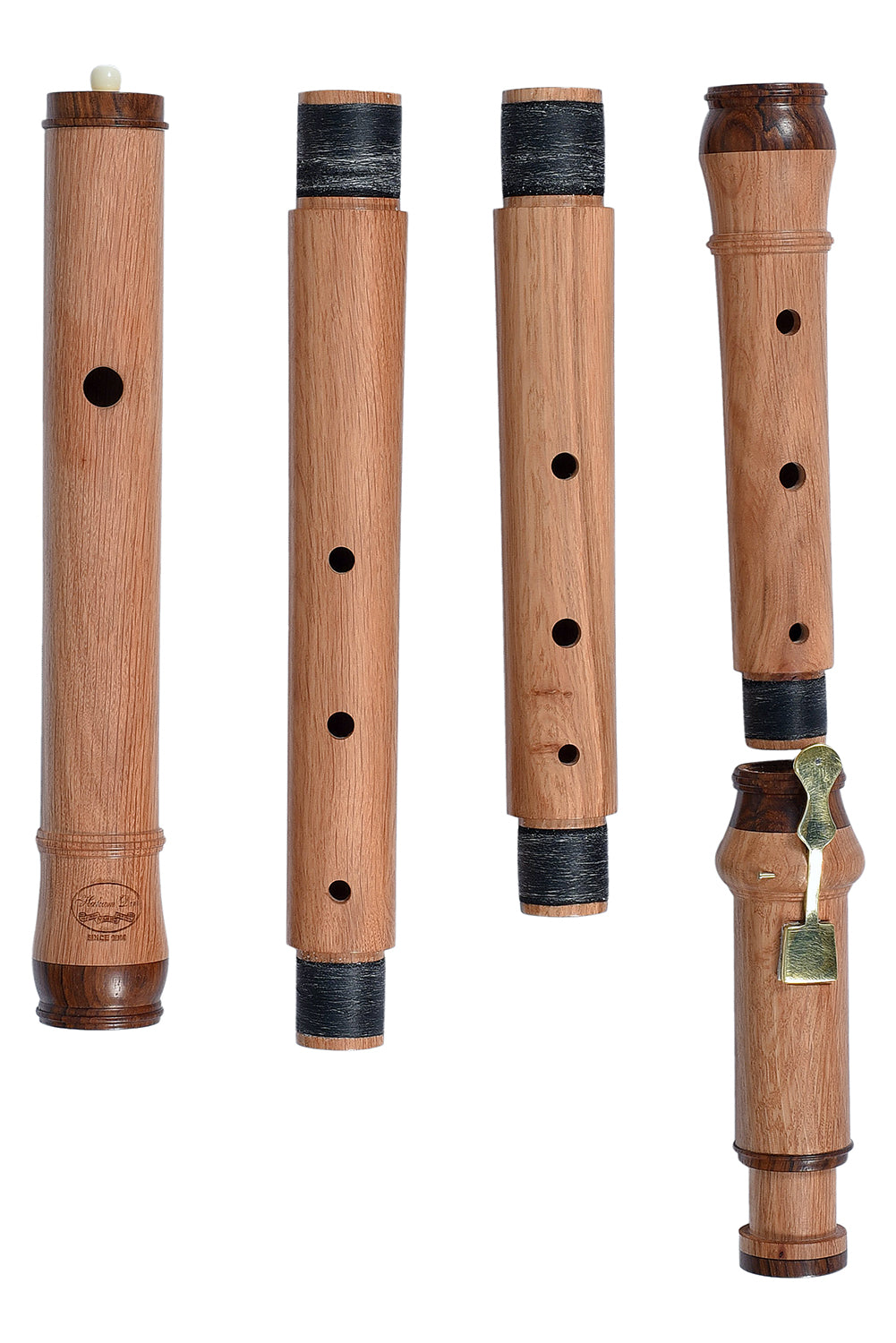

Our reproduction is modeled after August Grenser (Dresden 1720–1807), built at A = 415 Hz for Baroque performance practice and repertoire by composers such as Bach, Telemann, and Handel. Supplied with an adapted interchangeable joint at modern concert pitch A = 440 Hz for use with contemporary ensembles, while preserving the aesthetic and acoustic character of Grenser’s work.
With both joints 'Corps de rechange' (A=415 Hz and A=440 Hz), it features a slide head and a D foot joint with a register.
- Pitch A=415 Hz and (or) A=440 Hz.
- Screw cork.
- Crafted from Olive wood.
- Wood-ends are protected by Cocobolo wood rings.
- The key is casted from brass and features steel springs with leather pad.
- Comes with care instructions and a fingering chart.
- Additionally, accessories such as a plush-lined protective case, cleaning cloth, and extra key pads are provided.
Grenser’s original instruments were renowned for their clear, focused tone and responsive articulation. Our instruments are handcrafted to preserve his work, while ensuring reliability for modern performers.
Also known as Flauto Traverso or Transverse Flute, you can check out others modeled after JJ Quantz and G.A. Rottenburgh


